Introduction
Did you think the difficulty of a trail was limited to "easy," "medium," or "difficult"? Think again! The international standard ISO 3021, dedicated to adventure tourism in hiking and trekking activities, offers a much more rigorous and precise method.
After
distinguishing between simple hiking and committed trekking, discover the
four essential criteria that determine whether your next adventure will be a gentle stroll or a true expedition challenge.
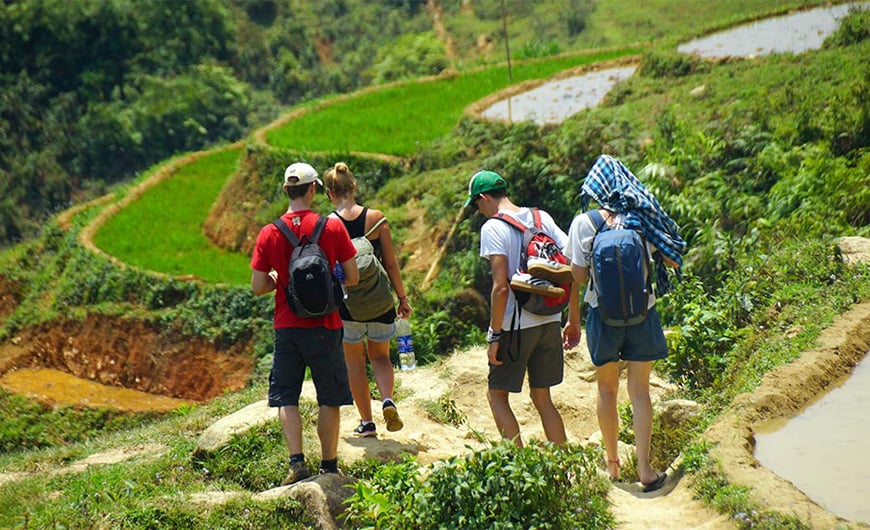 What sets a ride from an expedition apart ? Mr Linh's Adventures
What sets a ride from an expedition apart ? Mr Linh's AdventuresThe golden rule: four tests, one final rating
The ISO 3021 standard's approach integrates several distinct criteria to provide a comprehensive and objective assessment of a route's difficulty level.
Each of these four pillars is rated on a scale of 1 to 5. The crucial point—and the most important to remember—is that the route's final rating is the highest value obtained for any of the four criteria.
Typically, a trail might be physically very easy (rating 1), but if it crosses an area where rescue services are extremely remote or if there is a high risk of flash floods (Environmental Severity = 4), its overall classification will automatically be 4.
Here are these four evaluation criteria.
1. Environmental severity (Risk)
This criterion measures the inherent danger in the natural environment and how quickly a situation can escalate.
What matters: The remoteness of rescue services, extreme climate (winds, temperatures), altitude-related risk (acute mountain sickness), and the probability of sudden natural phenomena (landslides, dangerous animals).
The danger: The more hostile the environment and the more distant the assistance, the higher the rating climbs.
The extreme case (Level 5): This is reserved for high mountain or polar environments where survival depends entirely on self-sufficiency.
Example: Hiking at 3,000 meters of altitude with low oxygen levels is more difficult than on an equivalent route at sea level.
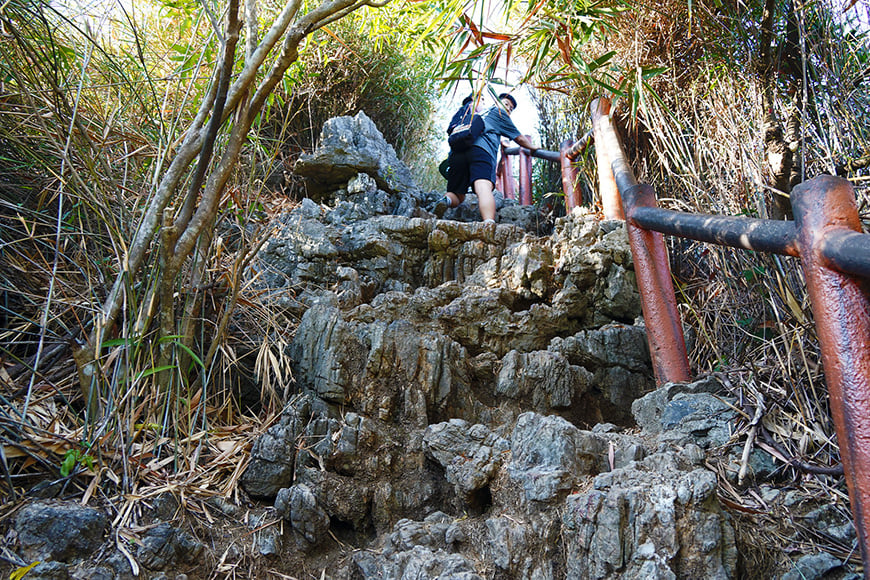 Technical challenges : do you have to walk, or do you have to climb? Mr Linh's Adventures
Technical challenges : do you have to walk, or do you have to climb? Mr Linh's Adventures2. Orientation and navigation (Skill)
This criterion evaluates the skills needed to avoid getting lost and to follow the planned route, even when the trail disappears.
What matters: The clarity and frequency of markings, the quality of the trails, and the necessity of using advanced navigation tools (topographic map, compass, GPS).
Level 1: Obvious and well-marked trail (even a child could find their way).
Level 5: Route entirely off-trail, requiring advanced navigation skills without obvious landmarks (such as in a desert or a dense forest).
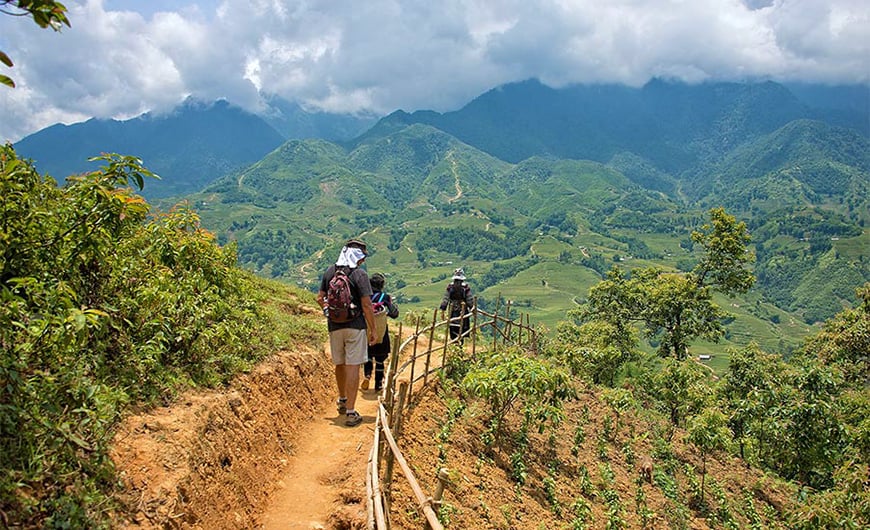 Will I be able to master orientation? Mr Linh's Adventures
Will I be able to master orientation? Mr Linh's Adventures3. Terrain conditions (Technicality)
This is the assessment of the physical and technical challenges posed directly by the surface and topography of the trail. In other words: do you just have to walk, or do you have to climb?
What matters: The slope, the presence of rocks, roots, snow/ice, scree, or exposed sections requiring the use of hands or specific equipment.
Level 1: Flat, stable, well-cleared trails and roads.
Level 5: Segments requiring easy climbing or scrambling techniques (often defined by the grades of the UIAA - Union Internationale des Associations d'Alpinisme aka : International Climbing and Mountaineering Federation), sometimes involving ropes or other safety equipment.
Example: A 400-meter climb on a rocky, unstable trail is much more demanding than an equivalent ascent on flat, grassy terrain.
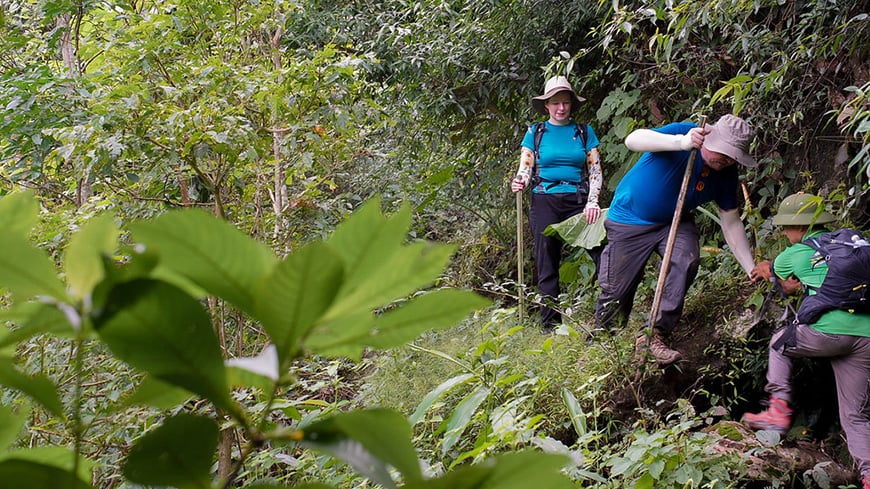 Check if you are prepared for the environmental severity | Mr Linh's Adventures
Check if you are prepared for the environmental severity | Mr Linh's Adventures4. Physical effort (Fitness)
This criterion measures the pure physical demand of the activity, regardless of risks or technical requirements.
What matters: The main element is the effective walking time, calculated from the horizontal distance and the elevation gain/loss (ascent and descent).
Aggravating factor: The weight of the pack is also integrated into the equation, as carrying a tent and food for a week changes everything.
The Effort Index ($I_e$): Professionals often convert time and effort into an index.
Example: A multi-day trek with heavy packs and large daily elevation gains will naturally receive a high score.
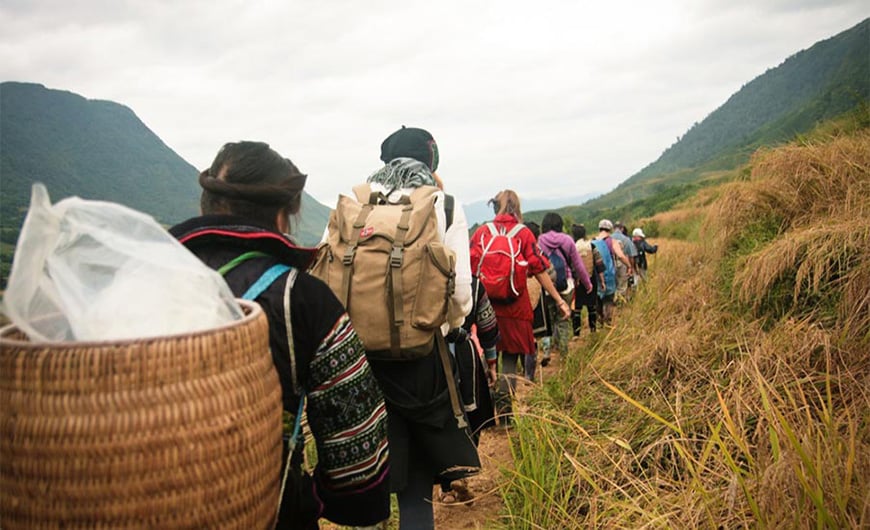 Anticipating the effective walking time | Mr Linh's Adventures
Anticipating the effective walking time | Mr Linh's AdventuresFinal interpretation: are you ready for the challenge?
The
ISO classification is not intended to discourage, but to inform and ensure the safety of participants. By structuring the assessment around these four axes, it makes it possible to anticipate the specific needs of a route and optimize risk management.
| Final classification |
Meaning |
Dominant activity type |
| Levels 1 & 2 |
Low risk, moderate effort. Route accessible to the majority of occasional walkers. |
Hiking |
| Levels 3 & 4 |
Moderate to significant risk. Requires good physical condition and, potentially, technical and orientation skills. |
Trekking or difficult hiking |
| Level 5 |
High risk, hostile environment, intense effort, required technical skills. |
Expedition trekking or mountaineering |
By understanding these four criteria, you move from the status of a simple walker to that of an
informed traveler.
Before packing your backpack, ask yourself:
✓ Am I prepared for the environmental severity?
✓ Will I be able to master orientation?
✓ Do I have the capacity for the technical terrain?
✓ And can my body withstand the required physical effort?
This is the secret to ensuring that every step is a pleasure, not a danger!